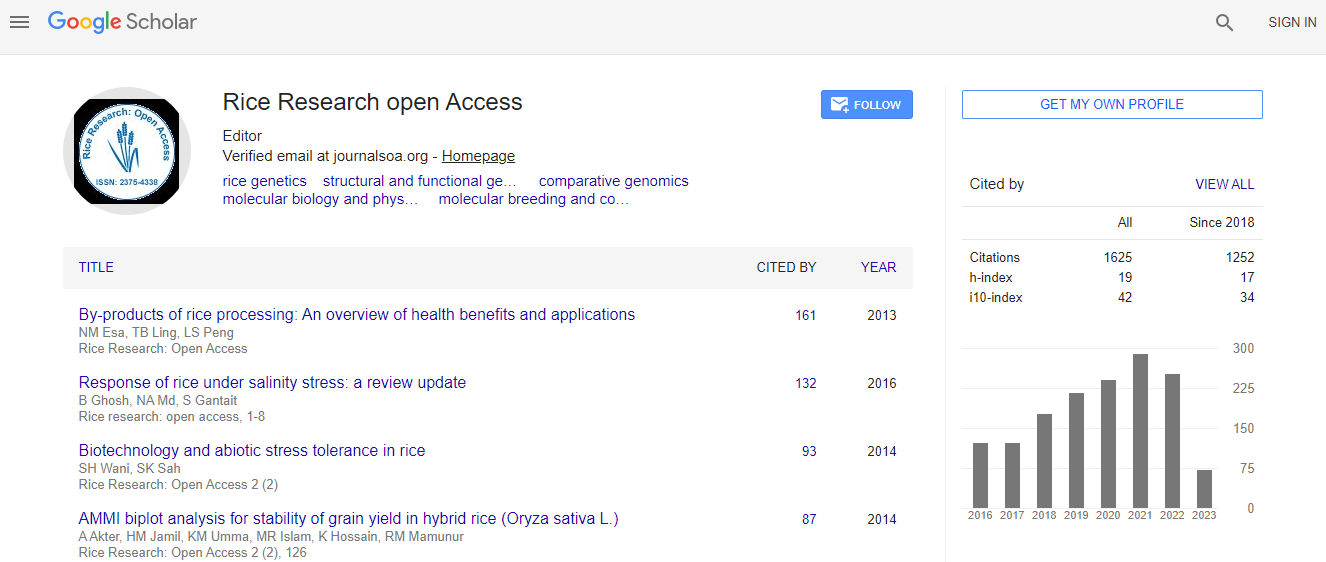Research Article
Complex Regulatory Networks of Flowering Time in Rice
| Yang-Seok Lee and Gynheung An* | ||
| Crop Biotech Institute & Graduate School of Biotechnology, Kyung Hee University, Yongin 446-701, Korea | ||
| Corresponding Author : | Gynheung An Crop Biotech Institute & Graduate School of Biotechnology, Kyung Hee University Yongin 446-701, Korea Tel: +86 512 6272 9029 E-mail: genean@khu.ac.kr |
|
| Received March 19, 2015; Accepted April 22, 2015; Published April 26, 2015 | ||
| Citation: Lee YS, An G (2015) Complex Regulatory Networks of Flowering Time in Rice. J Rice Res 3:141. doi: 10.4172/2375-4338.1000141 | ||
| Copyright: ©2015 Lee YS, et al. This is an open-access article distributed under the terms of the Creative Commons Attribution License, which permits unrestricted use, distribution, and reproduction in any medium, provided the original author and source are credited. | ||
Related article at Pubmed Pubmed  Scholar Google Scholar Google |
||
Abstract
Rice flowering is inhibited when days are long during Spring and early Summer. This phenomenon is mediated by several independent pathways. Several genes are preferentially expressed under such conditions, including Grain yield and heading date 7 (Ghd7), Heading date 1 (Hd1), Heading date 5 (Hd5), and Heading date 6 (Hd6). By contrast, Oryza sativa Constans-like 4 (OsCOL4) deters flowering regardless of day length. The AP2-like genes Supernumerary Bract (SNB) and Oryza sativa Indeterminate Spikelet1 (OsIDS1) constitutively inhibit flowering. However, as days become shorter in late Summer, flowering is induced. Although Hd1 protein functions as a repressor under long days, it becomes a promoter under short days (SD). Both OsMADS50 and OsDof12 induce flowering specifically under LD, while Oryza sativa Indeterminate 1 (OsId1) causes flowering regardless of day length. Levels of expression by the repressors decrease as plants mature. For example, Ghd7 transcripts are more abundant in young plants. Transcripts of SNB and OsIDS1 are degraded by miR172, which is induced in older plants. Most of the upstream signals are transferred to Early heading date 1 (Ehd1), an immediate upstream regulator of the florigen genes Heading data 3a (Hd3a) and Rice FT 1 (RFT1). However, some signals directly turn on the florigens that are transferred to the shoot apical meristem, where the reproductive transition occurs.

 Spanish
Spanish  Chinese
Chinese  Russian
Russian  German
German  French
French  Japanese
Japanese  Portuguese
Portuguese  Hindi
Hindi 
